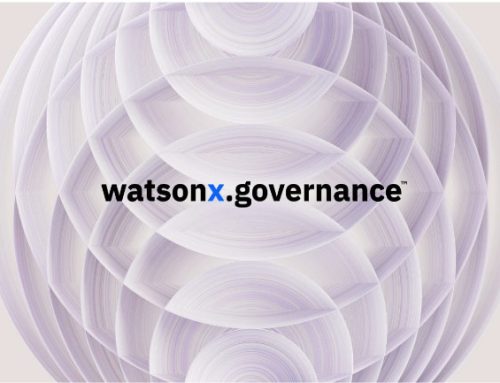
How AWS Sustainability Tools Are Powering Eco-Conscious Innovation
The cloud is the engine of modern business, a boundless realm of compute power that fuels everything from global e-commerce to life-saving research. But this engine has a voracious appetite.
The world’s data centers, the physical heart of the cloud, now consume approximately 1-1.5% of all global electricity, according to the International Energy Agency (IEA). This staggering figure places the IT industry at a critical crossroads, where innovation must be balanced with environmental responsibility.
For forward-thinking companies, sustainability is no longer a footnote in an annual report; it is a core business imperative. The demand for eco-conscious operations is coming from all sides: investors are scrutinizing Environmental, Social, and Governance (ESG) metrics, regulators are mandating climate-related disclosures, and customers are increasingly choosing brands that align with their values.
Fortunately, the push for a greener cloud is not just about compliance, it’s also about cost efficiency. Amazon Web Services (AWS), the world’s leading cloud provider, is at the forefront of this movement, architecting a suite of powerful tools and technologies that empower organizations to build sustainably.
As a testament to their commitment, AWS is on an accelerated path to power its operations with 100% renewable energy by 2025, having already achieved 90% in 2023. By leveraging AWS’s sustainability toolkit, companies can significantly reduce their carbon footprint while simultaneously trimming operational expenses, proving that what’s good for the planet is also good for the bottom line.
The AWS Sustainability Toolkit: Underutilized Gems for a Greener Cloud
While many are familiar with AWS’s scale and performance, a powerful set of sustainability-focused tools often remains underutilized. These are not just niche features; they are foundational components for building a truly “Green Cloud” architecture.
1. The Customer Carbon Footprint Tool
You cannot improve what you cannot measure. The AWS Customer Carbon Footprint Tool is the essential starting point for any cloud sustainability initiative. This user-friendly dashboard provides a detailed view of the carbon emissions associated with your AWS usage, allowing you to:
Track emissions by service and region: Pinpoint which services (e.g., EC2, S3) and geographic regions are contributing most to your carbon footprint.
Access actionable insights: The tool doesn’t just report numbers; it provides concrete recommendations for carbon reduction, such as identifying idle resources or suggesting more efficient instance types.
Forecast future emissions: Project how planned changes to your infrastructure will impact your future carbon footprint, enabling data-driven, sustainable decision-making.
2. AWS Graviton & Efficient Instances
One of the most impactful changes an organization can make is to optimize its compute instances. AWS Graviton processors are custom-designed by Amazon to deliver superior performance with maximum energy efficiency.
The latest generation, AWS Graviton4, provides up to 40% better price performance and uses up to 60% less energy for the same performance as comparable x86-based instances. Migrating workloads from older Intel or AMD-based instances to Graviton is a direct path to lower costs and a smaller carbon footprint.
Complementing this is the strategic use of Spot Instances. These instances allow you to access unused EC2 capacity at a significant discount, up to 90% off On-Demand prices.
By using Spot Instances for fault-tolerant workloads like batch processing, data analysis, or development environments, you not only slash costs but also improve resource utilization across the AWS network, preventing energy from being wasted on idle servers.
3. Sustainable Architecture Patterns
True sustainability is achieved through intelligent design. AWS facilitates several architectural patterns that inherently reduce waste:
Go serverless with AWS Lambda:
Traditional server-based models require you to provision and pay for compute capacity around the clock, much of which sits idle. Serverless computing with services like AWS Lambda completely eliminates this waste.
Code is executed only when triggered, meaning you consume zero energy when your application is not in use. It is the epitome of “pay for what you use” efficiency.
Strategic region selection:
Not all AWS Regions have the same carbon intensity. AWS powers its data centers with a mix of energy sources, and some regions, like US West (Oregon) and Europe (Stockholm), are backed by a higher percentage of renewables.
By intentionally deploying workloads to these cleaner-energy regions, you can instantly lower the associated carbon emissions.
Real-World Impact: AWS Sustainability in Action
One prominent retail company, under pressure to meet its ESG goals, embarked on a Green Cloud initiative. By migrating its core e-commerce platform and data analytics workloads to AWS Graviton-based instances and implementing a dynamic auto-scaling policy, the company cut its cloud-related carbon emissions by an estimated 30%.
The move not only satisfied sustainability stakeholders but also resulted in a 20% reduction in their EC2 compute costs.
In another case, a fast-growing data analytics startup was struggling with the high cost of its batch processing jobs, which ran nightly to analyze market trends.
The expense was limiting their ability to scale. By re-architecting their workflow to leverage AWS Spot Instances, they were able to continue their processing unabated while reducing their annual cloud infrastructure costs by over $50,000. This crucial saving was reinvested into product development, fueling further innovation.
ASB Resources: Your Partner for Green Cloud Transformation
Navigating the AWS sustainability toolkit and aligning it with your business goals requires specialized expertise. This is where a dedicated partner like ASB Resources can transform your aspirations into a concrete action plan with measurable results.
Green cloud assessment: We start with a comprehensive Green Cloud Assessment. Our experts analyze your current AWS environment to pinpoint opportunities for immediate impact. “We identify low-effort, high-impact changes, like rightsizing outdated EC2 instances, eliminating zombie assets, and flagging ideal workloads for Graviton migration.”
Implementation playbook: Armed with these insights, we deliver a customized playbook for action. We believe in efficiency, which is why our process is designed to “deploy AWS sustainability tools and best practices in 8 weeks—no ops overhaul needed.” We guide your team through every step, ensuring a seamless transition that minimizes disruption and maximizes results.
Compliance alignment: Achieving sustainability is only half the battle; you also have to report it effectively. We help you map your AWS sustainability efforts directly to major regulatory and reporting frameworks, including the Corporate Sustainability Reporting Directive (CSRD) in the EU, the SEC’s proposed climate-disclosure rules in the U.S., and the globally recognized ISO 14001 standard for environmental management systems.
Your First Step to a Greener, More Efficient Cloud
The path to sustainability is clear, and the tools are at your fingertips. Adopting a Green Cloud strategy with AWS is a powerful lever for enhancing your brand reputation, meeting regulatory demands, and unlocking significant cost savings hidden within your infrastructure. Stop letting wasted energy and carbon emissions be an invisible tax on your innovation.
Get a Sustainability Audit from ASB Resources and see how much carbon (and cash) you can save. Contact us today to schedule your complimentary assessment and begin your journey toward a more efficient, eco-conscious, and profitable cloud.








